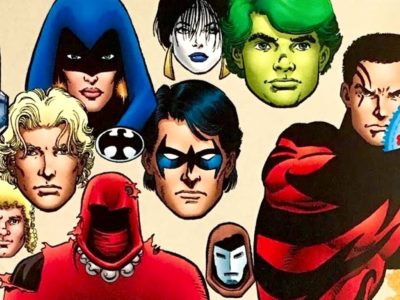
[ad_1]
Avengers #51 introduces Marvel’s Megaverse, bringing into question exactly what this new universe is and how it compares to the Multiverse.
WARNING: This article contains major spoilers for Avengers #51, on sale now from Marvel Comics.
Marvel’s comic book world is comprised of an infinite amount of universes stacked on top of one another, all connected through the invisible strands of space and time. Marvel’s heroes have consistently traveled through this multiverse since the concept was first established. But there’s another set of universes they rarely venture into that are held within a radically different system called the megaverse.
Avengers #51 (by Jason Aaron, Juan Frigeri, David Curiel, VC’s Cory Petit and Carlos Lao) saw the Multiversal Masters of Evil descend on Asgard. As the heroes of Earth-616 have their first encounter with the ‘anti-Avengers,’ they notice how closely these new figures resemble the heroes and villains they know. Just before he dies at the hands of their new foes, Deathlok warned that these Masters of Evil set out to conquer every universe, and the only hope of defeating them was to recruit Avengers from across the megaverse. This brings into question exactly what a megaverse is, and how it is different from the multiverse.
First established in 1971’s Avengers #85 (by Roy Thomas, John Buscema, Frank Giacoia and Mike Stevens), the multiverse is a collection of alternate universes that share basic concepts and fall within the same universal hierarchy. There are an infinite number of universes within a single multiverse, typically created when one character makes a major decision that could have had a different outcome. Alternate universes are also called “alternate timelines” because they’re created at points where a decision could have gone multiple different ways, thus splitting the timeline and creating an infinite amount of universes where a different choice was made. Given that similar events occurred across the universes held within one multiverse, its relatively easy for people to travel between them.
Meanwhile, the megaverse is a collection of multiverses that don’t necessarily have the same base attributes. Therefore, they would not be considered alternate timelines of one another because they weren’t created from a single decision. The Marvel Multiverse is connected by the same megaverse, but the universes contained within are all uniquely different. Because they are only a few tenuous links between multiverses in a megaverse, travel between them is hard even for the strongest beings in each universe. They only come together when the megaverse realigns itself, such as what happened in Marvel vs. DC, where the physical manifestations of each multiverse decided to pit its inhabitants against each other, thus allowing their inhabitants to cross over into other universes.
Every universe, multiverse, and megaverse ever imagined is part of the Omniverse. For example, the Marvel Cinematic Universe, classified as Earth-199999 in the Marvel Multiverse system, is part of a greater megaverse that contains every reality.
Since Avenger Prime and the Deathloks consider the Masters of Evil a megaverse-level threat, this immediately establishes the new villains as a force to be reckoned with. Considering they’ve seemingly laid waste to nearly every other universe within the Marvel multiverse, the Avengers may have finally met their match.
About The Author
[ad_2]






